1. This is an example of how not to handle a steer. I’m way too far to the left way too early and the steer is going down the arena. I let my horse get too wide too fast and I got way in front of the steer too early. The steer is going down the arena, so when Brock (Hanson) has to try to throw, I still don’t have a hold of his head. I’ve got the steer’s head turned loose too much here, and he’s going down the arena. His feet are coming back up the arena, and that makes him twice as hard to heel. Brock is almost running him over because the steer is just out of whack.
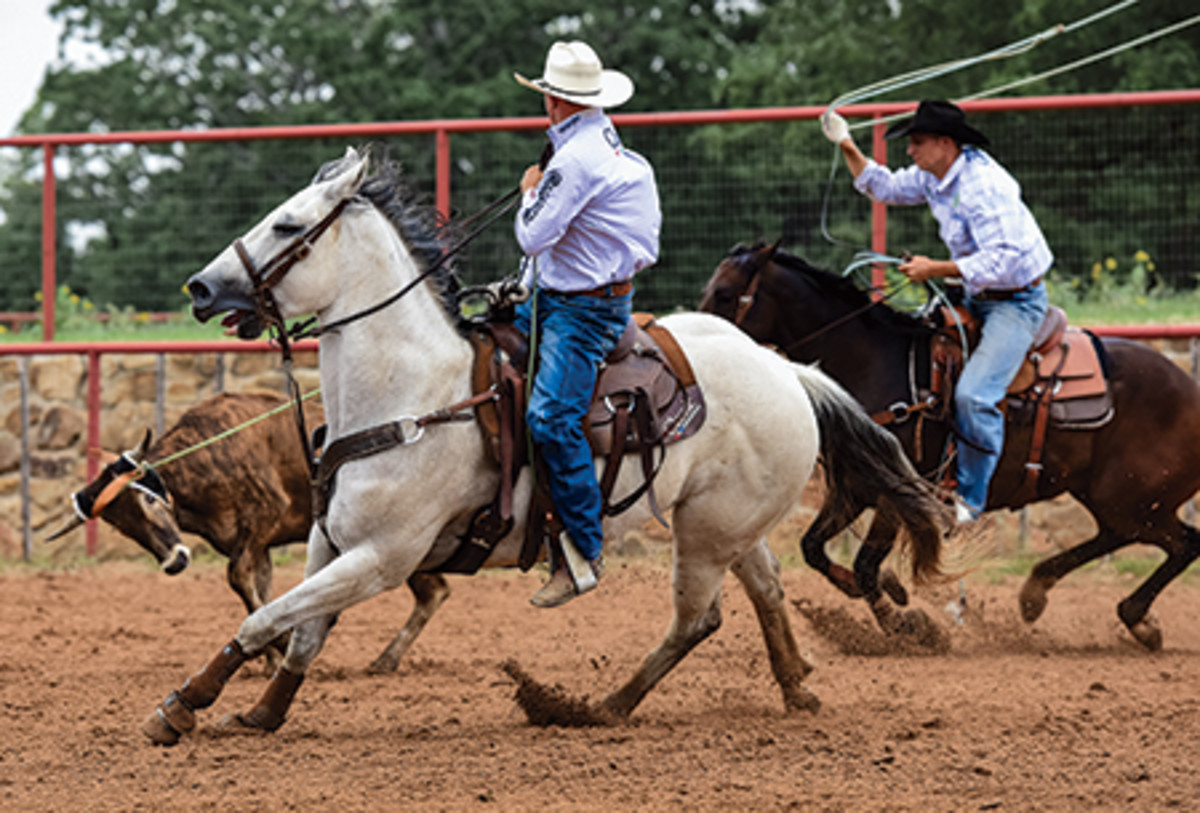
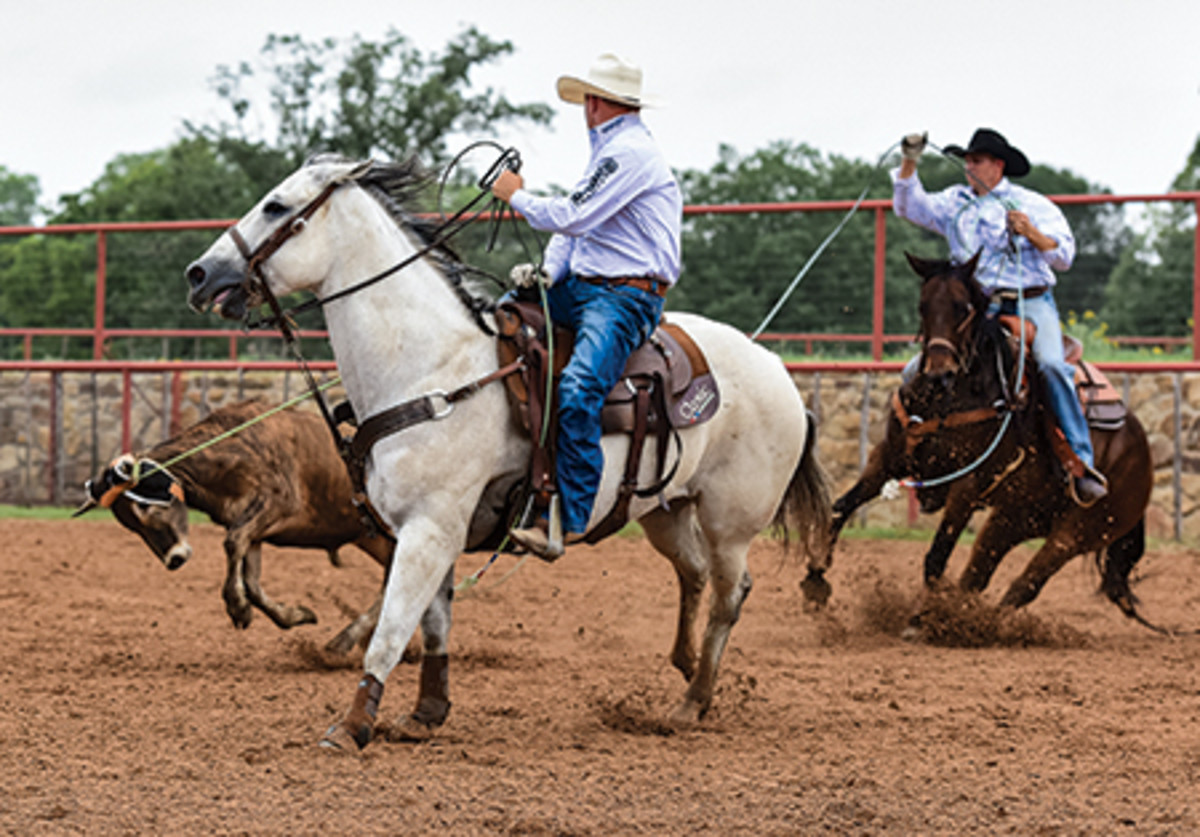
2. This is the end result of letting go of the steer’s head. He’s dragging and heavy and his head is still to the right, and Brock is doing his best to get him roped. With that steer out of position, when I do finish and face, we won’t come tight nearly as quick, either.
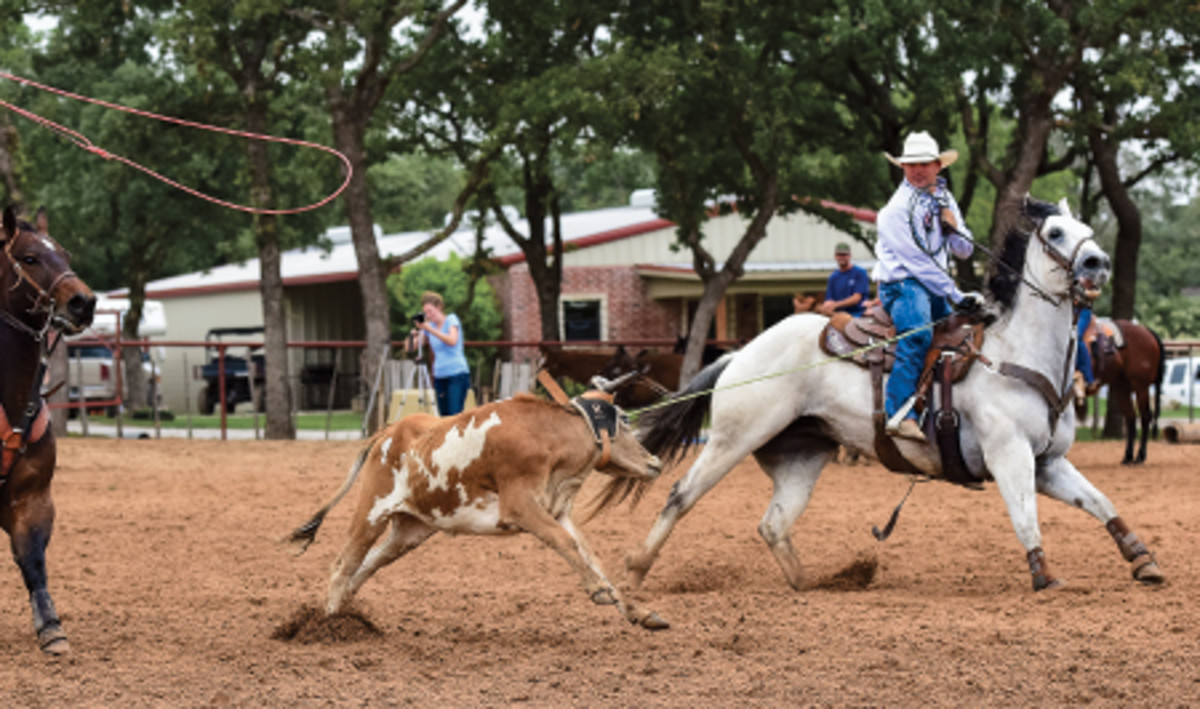
3. To get out of a situation like this, or to fix it as it’s happening, your horse needs to be really broke to help you. You need to be able to ride him with your legs quite a bit because you use a lot of right leg. He needs to bend at the rib cage and hold his body up based on how much leg you’re putting into him. He also needs to not pick his head up in the air every time you pick up on the reins, because a lot of time you need to use your left hand to hold him up in the corner. In the photo, I’m taking the pressure off her and sitting down in my saddle, too, to slow things down.
This steer is starting to stop, and he’s getting really heavy. I’m pulling extra hard to slow things down. She just backed off and put her butt in the dirt and got back up the arena. If she’d have kept running and I let the steer’s head go, we’d be way out of position and would have made my heeler’s job harder.
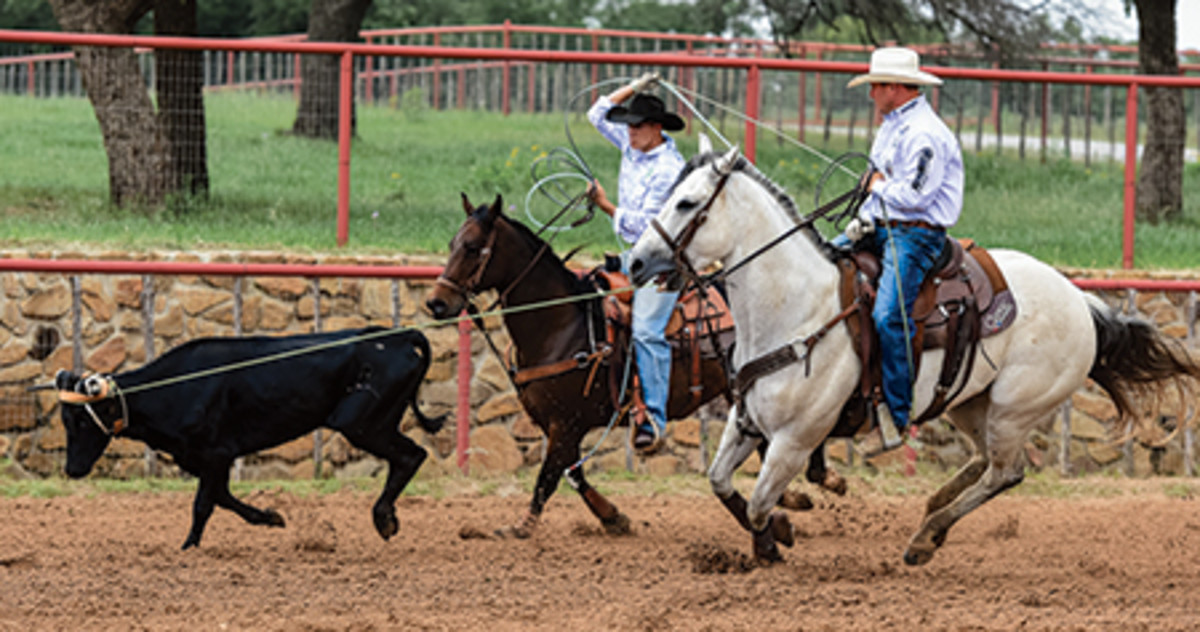
4. This steer was going off to the right a little bit, and I roped him and I’m letting his head turn before I kick to the left. I’m holding my horse up until the steer’s head starts to turn, and that brings that steer all the way around the corner. That slows the steer down so he’s not running up my rope or up the arena. My horse’s head is tipped to the right, and I’ve got my right leg holding up her rib cage on the inside. I want my horse far enough to the left when I go to the horn I don’t ball the steer up. I’m watching the steer’s head to see that it comes towards me and that he’s looking at me, too.
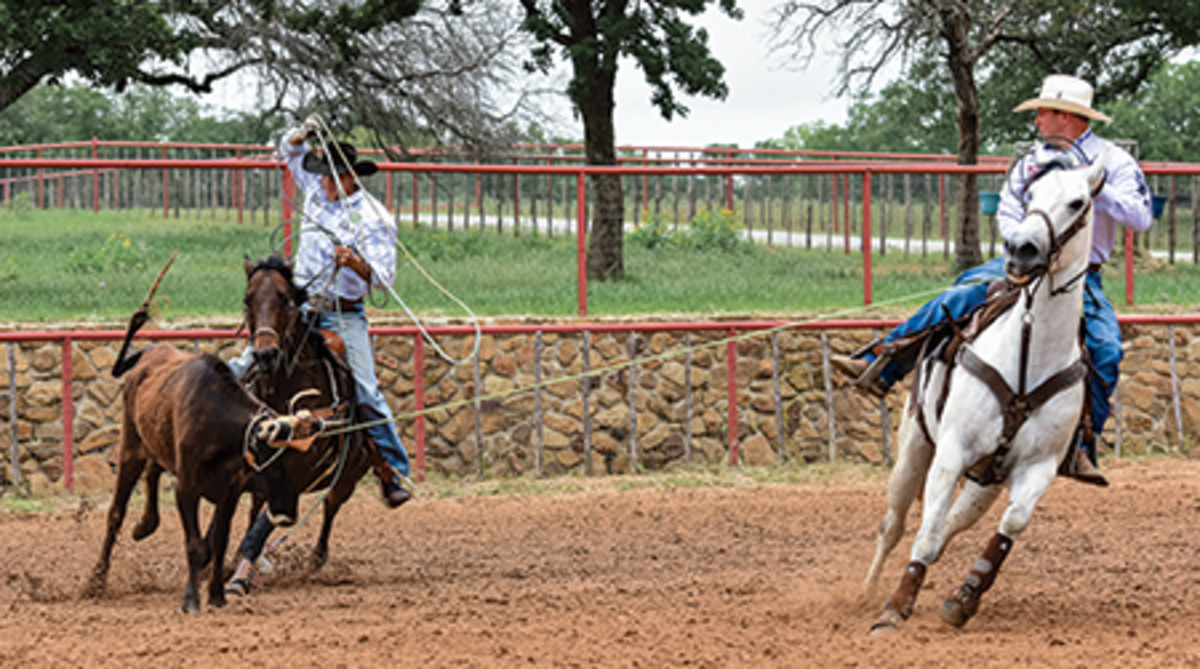
5. I want the steer’s rear end up the arena. That’s making his back feet stay straighter and to the outside. I had a hold of his head the whole run, and his feet are following. She’s got her back end driving underneath her and we’re in position to get a fast finish.










